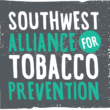
Youth smoking prevalence has declined significantly in recent years, due to a combination of public education efforts, local and state policies, and increased taxes on tobacco products. However, policies have not been implemented equally across the United States, leading to huge geographic disparities in both youth and adult smoking prevalence.
Although these disparities have existed for decades, there is a clear path forward. Research shows that five key policy changes could drastically reduce smoking prevalence in 12 Midwestern and Southern states where residents have nearly 50% higher smoking prevalence – a region we call Tobacco Nation that spans Alabama, Arkansas, Indiana, Kentucky, Louisiana, Michigan, Mississippi, Missouri, Ohio, Oklahoma, Tennessee, and West Virginia.
Smoking prevalence is nearly 50% higher in 12 Midwestern and Southern states
According to a new report from Truth Initiative®, not only is smoking prevalence nearly 50% higher for young people and adults in Tobacco Nation, but they also could smoke nearly 500 more cigarettes per year than the average smoker in the United States. This report – the most recent Tobacco Nation report and the third since 2017 – highlights geographic disparities in tobacco use and points to a clear need for action. According to the report, without intervention adult smoking prevalence in Tobacco Nation is forecasted to be over 40% higher on average over the next 20 years compared to the rest of the U.S.
With youth smoking prevalence reaching an all-time low of around 2% in 2022, we have a unique opportunity to harness this momentum and take strides to achieve a future where all Americans have the right to live free from tobacco and nicotine addiction. Tobacco Nation states can take the first steps to achieve this – and advocate for better health for their residents – by enacting key policy changes outlined below.
Read about achieving a tobacco-free future
Research shows key policy changes could reduce geographic disparities in tobacco use
According to a separate analysis by Truth Initiative and HealthPartners Institute, the implementation of key tobacco policy changes would have a concrete and measurable effect on the lives of Tobacco Nation residents.
When combined, these policy changes could lead to roughly 100,000 fewer cancer cases, 730,000 fewer hospitalizations, and 170,000 fewer deaths attributed to smoking in the first two decades following policy change. Furthermore, the same policy changes could save over $24 billion in smoking-attributable medical costs and increase productivity by over $100 billion.
In addition, the analysis shows that increased taxes on cigarettes would decrease adverse health outcomes by about five-fold for Tobacco Nation residents living below the poverty line.
Residents of Tobacco Nation states have the right to live long and healthy lives free of tobacco industry influence. With a series of tobacco policy changes, smoking prevalence in Tobacco Nation can be reduced to levels on par with the rest of the country.
1. Greater funding for public education and cessation programs
Investment in tobacco prevention and cessation measures remains one of the most efficient public health tools for improving and saving lives, with a large return on investment. Research has consistently demonstrated that tobacco-related public education campaigns save lives, promote quit attempts, reduce youth smoking initiation, lower health costs, and blunt the impact of tobacco industry marketing. Such programs are especially needed in Tobacco Nation, given its disproportionate share of the smoking population.
Quitting programs are also hugely important: the U.S. Public Health Service recommends that treating tobacco use should become part of routine health care for all smokers. States should include the full range of tobacco treatments in their Medicaid policies and provide robust quitting resources for their residents. Policy changes like greater spending on tobacco prevention and cessation and higher excise taxes must be paired with quitting support to be effective.
2. Higher tobacco excise taxes
We know that taxes work to discourage tobacco use, particularly among younger individuals and groups with fewer financial resources. When paired with other policies, higher cigarette taxes can play a role in preventing young people from starting to smoke and encouraging users to quit.
3. Strong flavor policies
Flavors play a significant role in drawing youth and young adults to tobacco products. Local laws restricting the sale of flavored tobacco products have gained momentum in recent years, but very few have been implemented in Tobacco Nation: only three out of nearly 400 flavored tobacco policies in the U.S. have been enacted in the 12 states with the highest smoking prevalence.
State and local governments within Tobacco Nation should enact policies that restrict the sale of flavored tobacco products, including menthol, mint, and wintergreen flavors. (For examples of state and local efforts to prohibit the sale of flavored tobacco products, see our flavors fact sheet.)
4. Reversing pre-emption
Pre-emption is a legal doctrine that allows upper levels of government to limit or restrict lower-level (usually city or county) governments from enacting legislation. Pre-emption can be an obstacle to enacting strong local tobacco policies that often have the greatest reach. Localities should be allowed to enact stronger policies than the state level, and efforts must be made to ensure future state laws do not introduce other forms of tobacco policy pre-emption.
5. Reduce retail outlets and enact point-of-sale policies
An estimated 380,000 retailers sell tobacco products in the United States – that is 28 times more tobacco retailers than there are McDonald’s restaurants. The number of tobacco retailers in a given area also contributes to tobacco-related health disparities, since tobacco retailers are disproportionately located in more heavily populated areas with a greater number of minority and low-income populations. Reducing the number of tobacco retail outlets could help address these disparities and reduce access to tobacco products.
Since tobacco companies continue to use the retail environment to encourage smoking behavior through product displays and promotions, state and local governments within Tobacco Nation should enact point-of-sale policies such as keeping tobacco products behind the counter, keeping tobacco advertisements above the eye level of children, and prohibiting tobacco sales in pharmacies.
Policy strategies could have approximately twice the impact in Tobacco Nation states compared with other states
It is possible to imagine a United States where Tobacco Nation does not exist anymore: more aggressive tobacco control spending paired with higher taxes targeted to areas with high smoking prevalence can effectively erase disparities in tobacco use that have existed for decades across state borders, resulting in considerable health and economic benefits.
While all states can make substantial gains by increasing cigarette taxes and tobacco control expenditures, the predicted impact in Tobacco Nation states is approximately twice that of other states.
These findings underscore the benefits of prioritizing tobacco prevention and cessation efforts in Tobacco Nation states. Prioritizing change in these states will also greatly benefit populations living in poverty, as well as Black Americans who have been targeted by the tobacco industry for decades and have been disproportionately affected by tobacco use.



